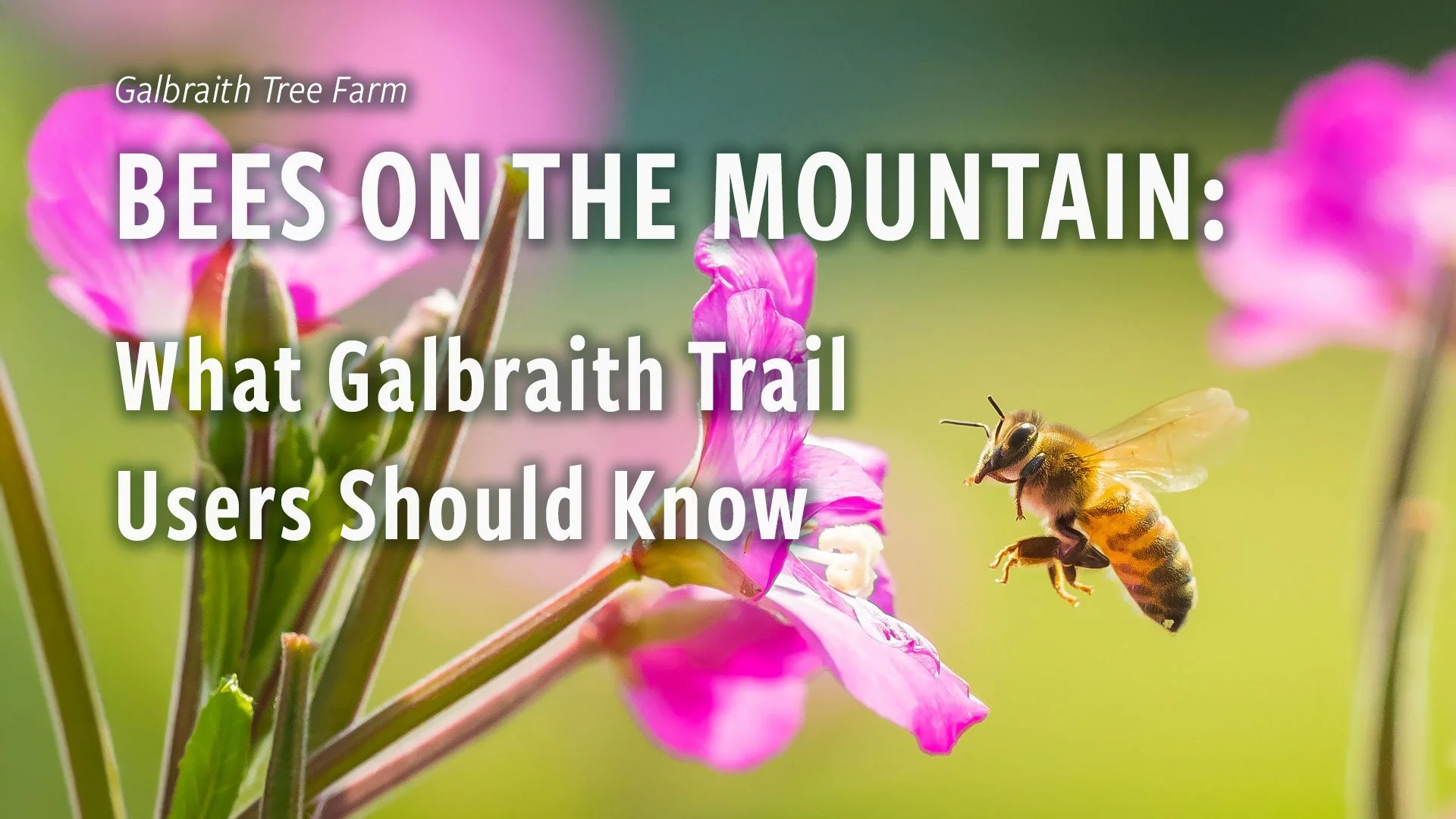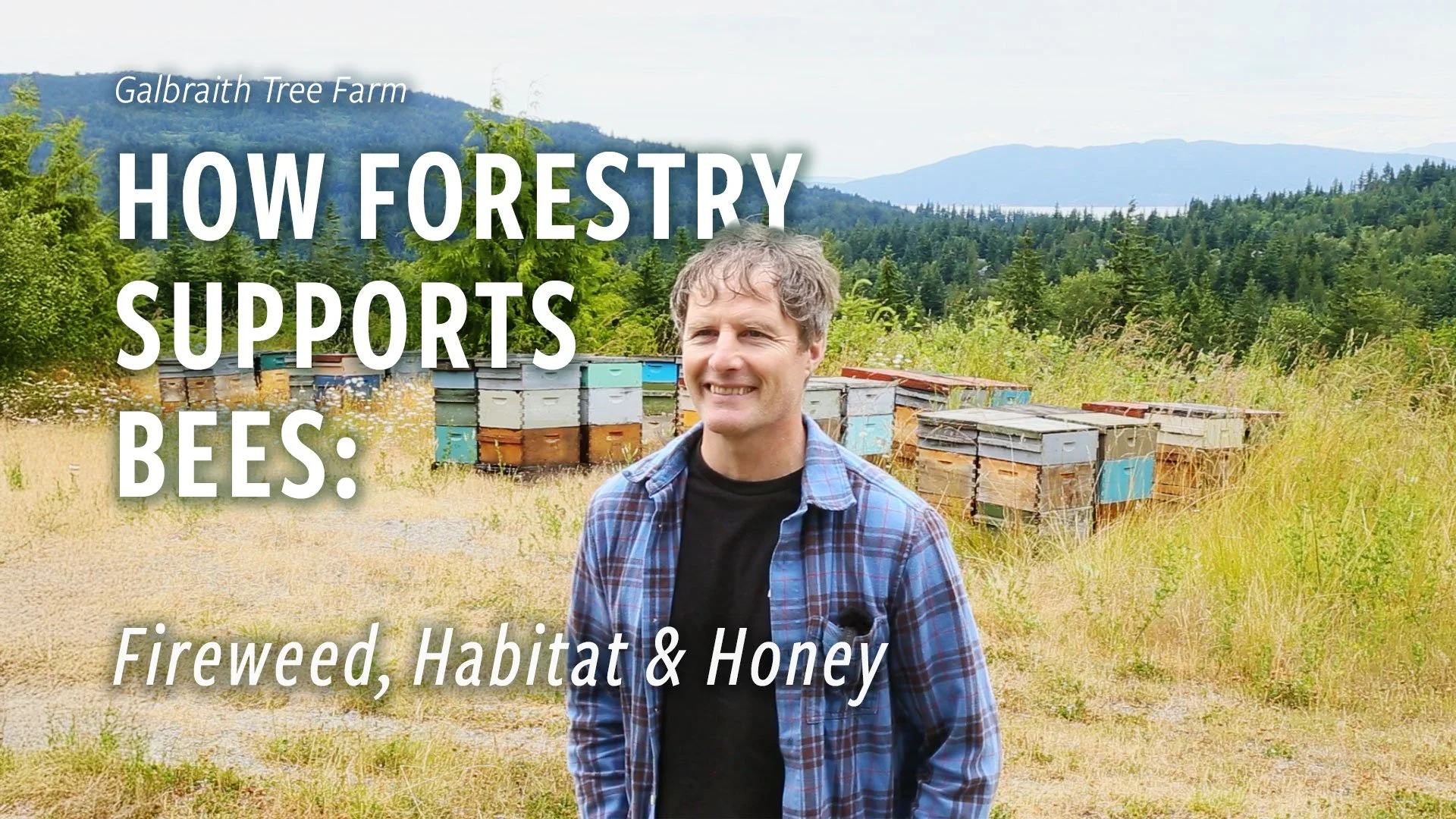Bees, Blooms, and a Buzzing Forest: Why Hives Are Now Part of Galbraith’s Landscape
Rob Rienstra, Owner of Bee Works Farms at Galbraith Mountain
A new partnership supports pollinators, local honey production, and recovering forest habitat
This summer, trail users on Galbraith Mountain may notice a new kind of activity—one that hums quietly from a distance. In partnership with Bee Works Farm, Janicki Logging Co. has placed honeybee hives in several post-harvest clearings on Galbraith Tree Farm. The goal? Support pollinators, pursue fireweed honey, and showcase how working forests can foster thriving ecosystems—all while keeping trails open and safe for recreation.
👇 Two short videos tell both sides of the story:
🐝 An Idea Sparked by a Mountain Biker
The project began with a simple comment from Nick, a Bee Works Farm employee and frequent Galbraith mountain biker.
“You know, we should really put bees on Galbraith.”
His boss, Bee Works owner Rob Rienstra, had already hiked the area and thought the same. When they reached out to Rob Janicki—whose family manages Galbraith Tree Farm—he quickly got on board. Within weeks, Bee Works had installed hives at three discreet locations across the property.
🎥 Video 1: Bees on the Mountain
What hikers, bikers, and other trail users should know
“Hopefully they’ll just add to the ambiance,” says Rienstra. “We placed the hives out of the way of bikers and hikers, but if you do come near them—don’t swat. Just walk away calmly.”
If you ever see a hive that appears damaged or knocked over, please contact Bee Works via beeworks.farm.
🌸 Fireweed, Blackberry, and the "Champagne of Honeys"
In the first video, Rob holds up a jar of Bee Works honey—nearly translucent in the sunlight.
“This is mostly fireweed honey,” he explains. “People call it the champagne of honeys. It’s light, bright-tasting, and really delicate.”
Fireweed thrives in disturbed ground, such as areas recovering from forest fires or timber harvests. So do sweet clover and blackberry—two other nectar-rich plants found in abundance along Galbraith’s roadsides and clearings. Together, they form a dynamic seasonal forage zone for bees.
Because of Galbraith’s elevation gradient, the bees can “follow the bloom” uphill throughout the summer, foraging fresh blossoms into late August.
“They’re fantastic economists,” Rienstra says in the video. “They know exactly what’s paying off and when.”
🌱 How Forestry Recovery Creates Forage
It may surprise some that timber harvests can benefit pollinators—but this project illustrates how apiculture and commercial forestry can complement each other in a regenerative land model.
“Pure forest and pure grassland aren’t great for honey bees,” Rob says in the second video. “But in between—at the edges—you get all these forage-rich species.”
Logging roads, firebreaks, and open-canopy clearings often act as pollinator corridors. After harvest, it typically takes 3–4 years for those areas to become high-quality forage. In some cases, the bloom cycle continues for over a decade before trees mature and shade out the ground layer.
Hosting hives in these zones provides several overlapping benefits:
✅ Pollination of early successional plant species
✅ Enhanced nutrition and survival for bee colonies
✅ Sustainable honey production in sync with forestry timelines
The site featured in the video contains eight hive pallets—about 32 colonies and roughly 1.5 million bees. The other two sites on Galbraith are smaller, each hosting about half as many colonies. As the forest regenerates, the bees do their work in parallel.
🎥 Video 2: Bees and Forest Recovery
How habitat created by logging can support pollinators and ecological resilience
🚶 How to Be a Good Neighbor to the Bees
If you encounter one of the hives this summer:
Don’t swat at bees—this startles them and increases the risk of stings
Stay calm and walk away if they fly near you
Report any tipped or damaged hives via beeworks.farm
In Rob’s words: “Just act bored and walk away. Even if you’re nervous, the bees will usually leave you alone.”
🍯 Where to Find the Honey
Bee Works honey is available at:
Bellingham Farmers Market
Community Food Co-op, Joe’s Gardens, Rome Store, Village Books, and more
Skagit Valley Food Co-op and PCC Community Markets in the Seattle area
You can also place custom orders or inquire about availability at beeworks.farm.
There are no immediate plans to label a “Galbraith Honey,” but if the bees do well this year, that could change.
💚 More Than a Curiosity: A Model for Forest Stewardship
Bees on Galbraith aren’t just about honey—they’re part of a broader philosophy of working forest management that balances ecological recovery, recreation, and responsible production.
By pairing short-term harvest goals with long-term habitat function, Janicki Logging Co. and Bee Works Farm are demonstrating that forest health and forest use can support each other.
📚 Learn More
Explore how Janicki Logging Co. supports pollinators, habitat, and recreation through sustainable forestry:
🔗 Forest Restoration Projects
🔗 Galbraith Mountain
🔗 Bee Works Farm



